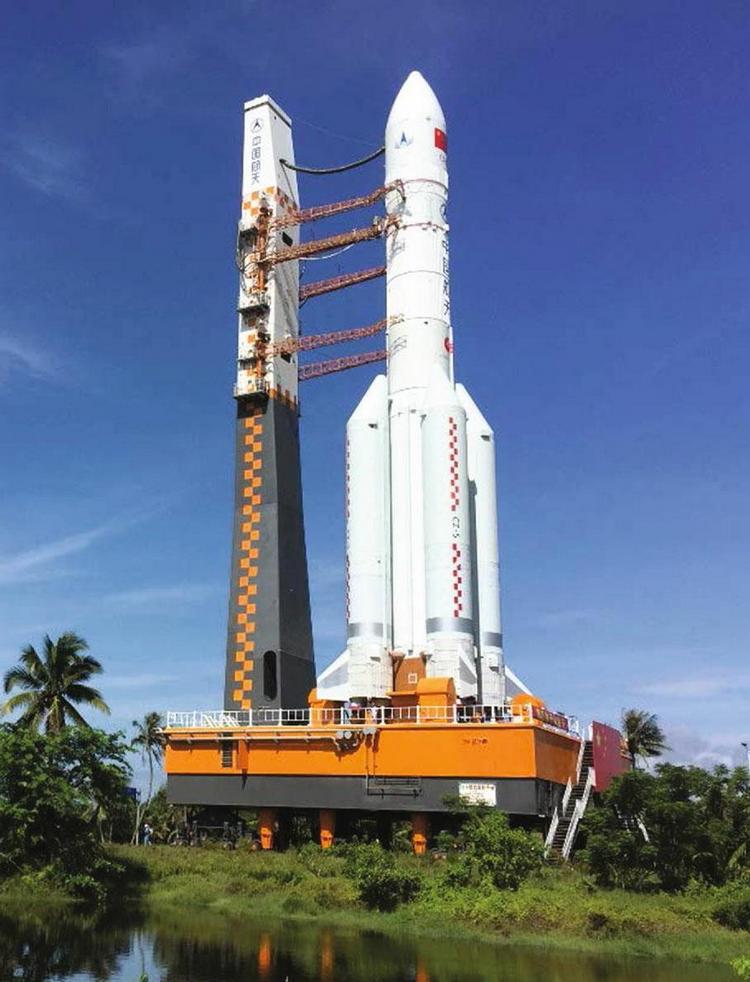
Long March 5/YZ-2
ActiveChina Aerospace Science and Technology Corporation (CASC)
Nov. 3, 2016
Description
Specifications
-
Length
― -
Diameter
― -
Fairing Diameter
― -
Launch Mass
― -
Thrust
―
Family
-
Name
Long March 5/YZ-2 -
Family
― -
Variant
YZ-2 -
Alias
― -
Full Name
Long March 5/YZ-2
Payload Capacity
-
Launch Cost
― -
Low Earth Orbit
― -
Geostationary Transfer
Orbit
― -
Direct Geostationary
― -
Sun-Synchronous Capacity
―
China Aerospace Science and Technology Corporation
Government
Chairman & President: Lei Fanpei
CASC 1999The China Aerospace Science and Technology Corporation (CASC) is the main contractor for the Chinese space program. It is state-owned and has a number of subordinate entities which design, develop and manufacture a range of spacecraft, launch vehicles, strategic and tactical missile systems, and ground equipment. It was officially established in July 1999 as part of a Chinese government reform drive, having previously been one part of the former China Aerospace Corporation. Various incarnations of the program date back to 1956.
Long March 5 / YZ-2 | Shijian 18
China Aerospace Science and Technology Corporation | ChinaWenchang Space Launch Site, People's Republic of China
July 2, 2017, 11:23 a.m.
Status: Launch Failure
Mission:
Shijian 18 is a Chinese experimental geostationary satellite based on the new DFH-5 Bus. Reportedly the transmission capacity of the satellite is double that of current Chinese communications satellites, allowing more television channels and clearer programs to be transmitted. The new satellite will also improve internet connectivity and accessibility as well as reduce users' costs.
Geostationary Transfer OrbitLong March 5 / YZ-2 | Shijian 17
China Aerospace Science and Technology Corporation | ChinaWenchang Space Launch Site, People's Republic of China
Nov. 3, 2016, 12:43 p.m.
Status: Launch Successful
Mission:
This will be the maiden flight of the Long March 5, which is China's next-generation heavy-lift space launch system, comparable in performance to the European Ariane 5 and the U.S. Delta IV Heavy. The rocket is powered by RP-1 and Hydrogen, and will be able to place 25 tonnes into low earth orbit. It is carrying Shijian-17, an experimental satellite, reportedly tasked with testing ion propulsion systems for future space station keeping uses.
Geostationary OrbitElectron
Don't Be Such A Square (STP-S30)
Rocket Lab Launch Complex 2 (Launch Area 0 C) - Wallops Flight Facility, Virginia, USASTP-S30 is a complex mission that will deliver research experiments and technology demonstrations to orbit for the DoD and contribute to future space…
Falcon 9
Starlink Group 15-13
Space Launch Complex 4E - Vandenberg SFB, CA, USAA batch of 27 satellites for the Starlink mega-constellation - SpaceX's project for space-based Internet communication system.
Falcon 9
Starlink Group 6-99
Launch Complex 39A - Kennedy Space Center, FL, USAA batch of 29 satellites for the Starlink mega-constellation - SpaceX's project for space-based Internet communication system.
Ariane 62
Galileo L14 (FOC FM33 & FM34)
Ariane Launch Area 4 - Guiana Space Centre, French GuianaPayload consists of two satellites for Europe's Galileo navigation system.
Atlas V 551
Amazon Leo (LA-04)
Space Launch Complex 41 - Cape Canaveral SFS, FL, USAAmazon Leo, formerly known as Project Kuiper, is a mega constellation of satellites in Low Earth Orbit that will offer broadband internet access, thi…

